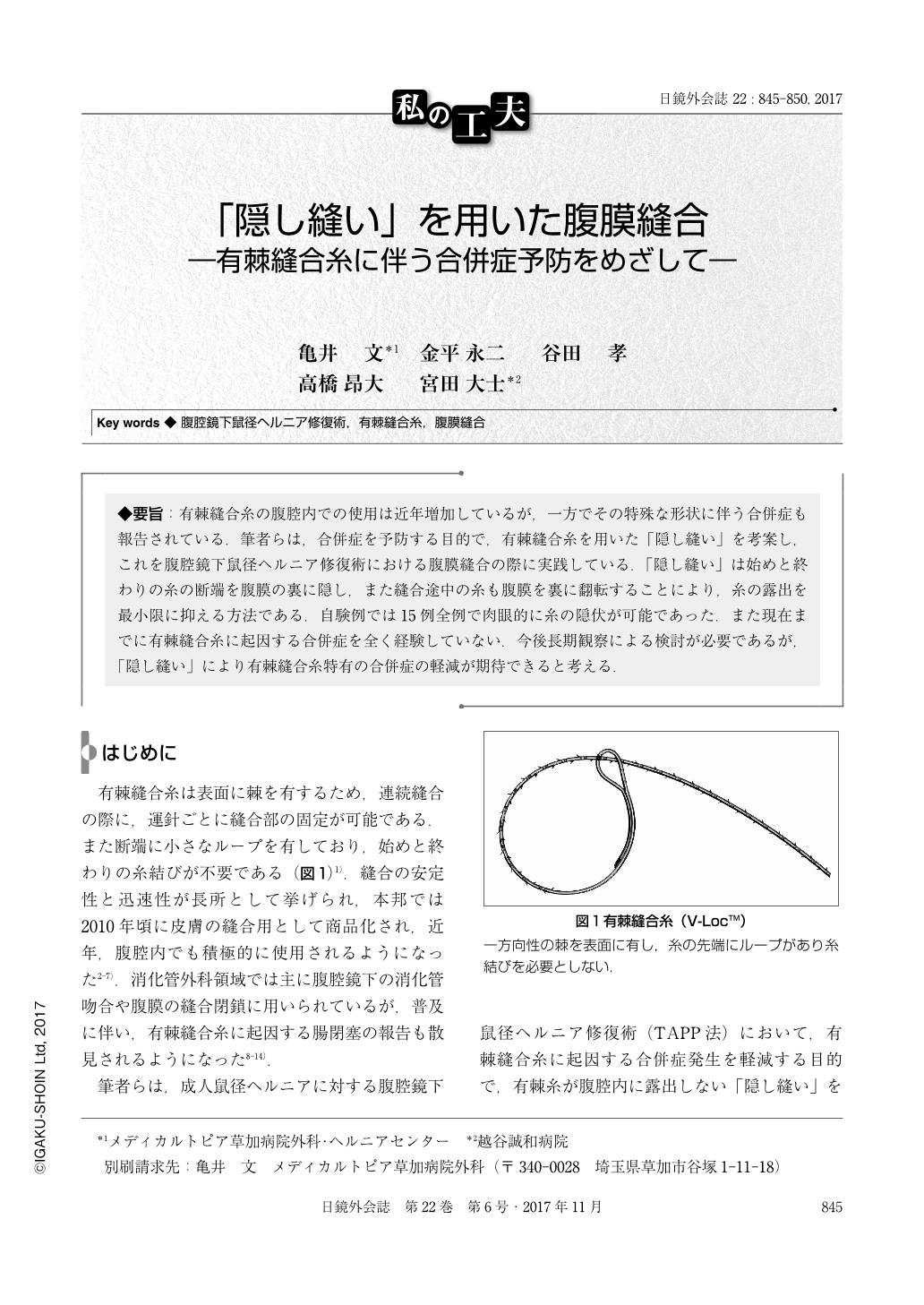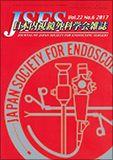Japanese
English
- 有料閲覧
- Abstract 文献概要
- 1ページ目 Look Inside
- 参考文献 Reference
◆要旨:有棘縫合糸の腹腔内での使用は近年増加しているが,一方でその特殊な形状に伴う合併症も報告されている.筆者らは,合併症を予防する目的で,有棘縫合糸を用いた「隠し縫い」を考案し,これを腹腔鏡下鼠径ヘルニア修復術における腹膜縫合の際に実践している.「隠し縫い」は始めと終わりの糸の断端を腹膜の裏に隠し,また縫合途中の糸も腹膜を裏に翻転することにより,糸の露出を最小限に抑える方法である.自験例では15例全例で肉眼的に糸の隠伏が可能であった.また現在までに有棘縫合糸に起因する合併症を全く経験していない.今後長期観察による検討が必要であるが,「隠し縫い」により有棘縫合糸特有の合併症の軽減が期待できると考える.
The use of barbed suture in laparoscopic surgery has been becoming popular in recent years. On the other hand, complications such as small bowel obstruction due to adhesion of intraabdominal organs to the barbed suture has been reported. To avoid this kind of complication, we developed a new suture method and named it “Blind stitching”. By this method, the barbs on the thread are hidden behind the peritoneum and the edges of the peritoneum are inversed at the same time. Both the cut end and the suture are hidden as much as possible by careful stitching and adjacent of the peritoneum during continuous suture. We performed blind stitching to close the peritoneum during laparoscopic transabdominal preperitoneal hernia repair(TAPP) in 15 patients. Macroscopically the barbs seemed completely hidden in all cases. So far, we have not experienced any complication in a short term follow up. Although the long term outcomes are unknown yet, we think we might expect that the blind stitching can prevent complication due to barbed suture.

Copyright © 2017, JAPAN SOCIETY FOR ENDOSCOPIC SURGERY All rights reserved.


